Liquid Rhinoplasty Tip Lift: Complete Guide
Some people explore non-surgical procedures as an option to temporarily adjust the appearance of the nose. Liquid rhinoplasty, sometimes referred to as a non-surgical nose tip procedure, uses injectable materials to alter the nasal tip. This guide provides educational information on what the procedure involves, who performs it, and factors to consider before making any decisions.
What Is Non-Surgical Rhinoplasty?
Non-surgical rhinoplasty is a cosmetic procedure performed by trained health professionals using injectable materials. It is a non-surgical approach to temporarily adjust the nasal tip. The procedure does not involve incisions, and the effects are temporary. Outcomes vary between individuals, and suitability should be assessed by a qualified practitioner.
Suitable Candidates
Non-surgical nose procedures may be considered by individuals who wish to temporarily adjust the appearance of the nasal tip. Factors that can influence suitability include individual anatomy, previous injuries, and age-related changes. Qualified practitioners assess these factors during consultation to determine whether a procedure may be appropriate. Common considerations may include:
-
Changes in nasal tip position due to age
-
Minor asymmetries or irregularities
-
Past nasal trauma
-
Previous nasal surgery effects
Non-surgical procedures have limitations and may not address major structural changes or large reductions in nasal size. Outcomes are temporary and vary between individuals.
Causes of a Drooping Nasal Tip
A drooping nasal tip can occur for different reasons, including age-related changes, genetics, trauma, or previous surgery. Understanding these factors can help individuals discuss potential options with a qualified practitioner. This educational information does not guarantee any outcomes.
Non-Surgical Procedure Considerations
Non-surgical rhinoplasty is discussed as an option to temporarily adjust the nasal tip. Injectable materials can be used to change the appearance of the nose, and the procedure is performed in a clinical setting. Results vary between individuals and are temporary. Factors people may consider include:
-
Effects are temporary and vary between individuals
-
Recovery time can be minimal for some people
-
Results may be adjusted or reversed by a qualified practitioner if necessary
-
No incisions are involved
-
Subtle adjustments may be possible depending on individual anatomy
- The procedure is typically brief
Procedure Overview
Non-surgical rhinoplasty procedures generally involve a consultation with a qualified health professional to discuss individual suitability, goals, and considerations. The procedure is performed in a clinical setting using injectable materials. Duration of the procedure and effects vary depending on individual characteristics and product selection, and results are temporary.
Steps typically include:
-
Consultation: Review medical history, discuss individual nasal features and objectives, and explore whether non-surgical options may be appropriate.
-
Preparation: Health professional ensures the area is clean and may use methods to reduce discomfort.
-
Injection Process: Injectable materials may be administered in small amounts, following guidance from the consultation. Individual responses vary.
- Aftercare Guidance: Practitioners provide instructions on post-procedure care and discuss possible temporary effects such as mild swelling or tenderness.
Follow-Up & Maintenance
Follow-up appointments may be scheduled to review the treated area and answer questions. Any discussion of further procedures should be based on individual needs and consultation with a qualified practitioner.
Timing Considerations
Individuals interested in non-surgical rhinoplasty may discuss timing and suitability with a qualified practitioner. Decisions about undergoing the procedure should be based on personal considerations, consultation guidance, and understanding of the temporary and variable nature of outcomes. Any timing considerations, including personal schedules or events, should be discussed with a qualified practitioner.
When Surgical Rhinoplasty May Be Necessary
Some cases may require surgical rhinoplasty, particularly if significant structural changes, functional adjustments, or permanent alterations are desired. Non-surgical procedures are temporary and may not address all structural concerns. Individuals seeking long-term or more significant changes should discuss surgical options with a qualified practitioner. Non-surgical rhinoplasty can be considered as one temporary, adjustable option, with outcomes varying between people.

